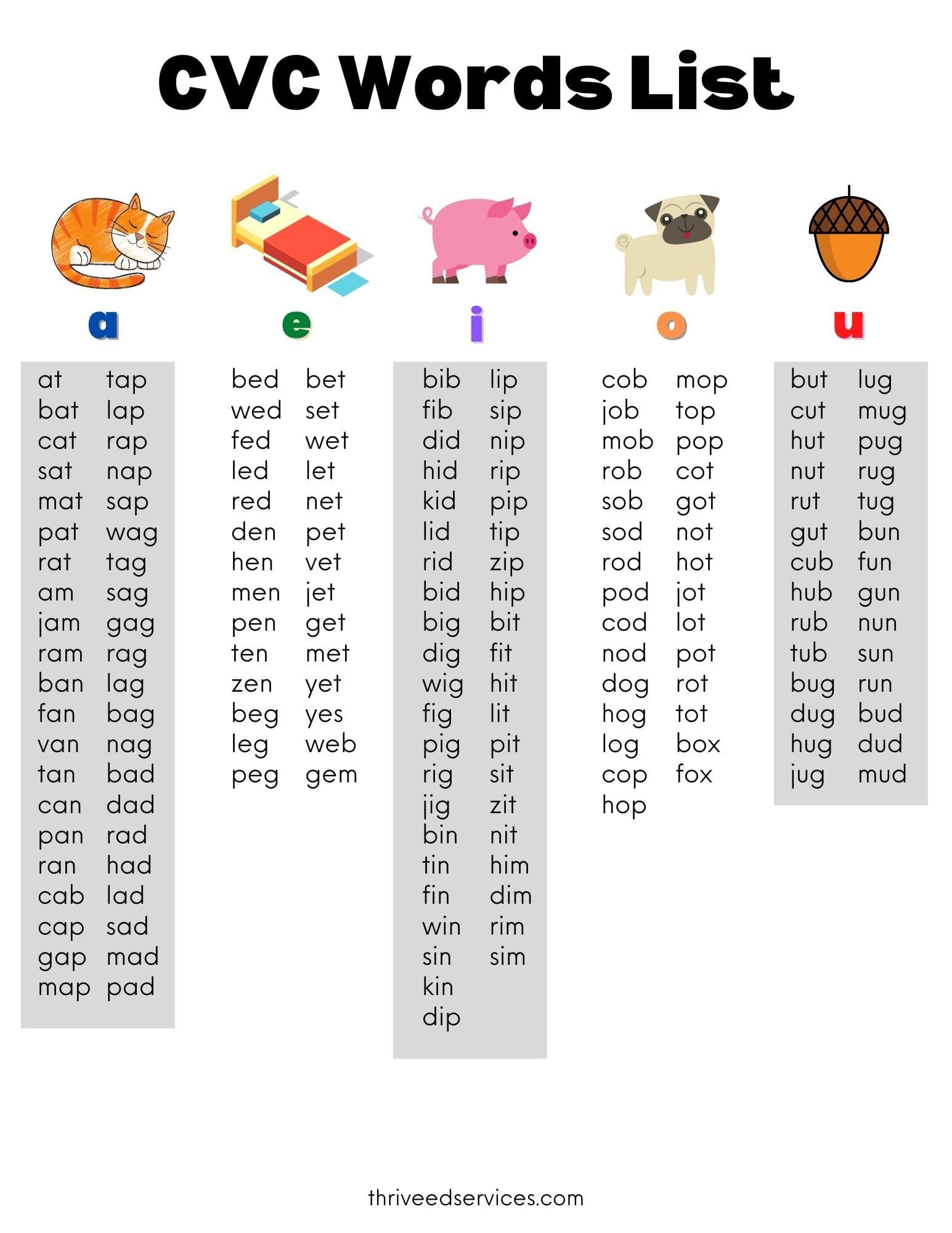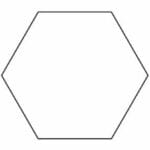This guide unlocks the secrets of CVCe words—those tricky consonant-vowel-consonant-silent e words like “bake,” “bike,” and “rule.” Whether you’re a teacher, parent, or simply looking to improve your spelling, we’ve got you covered with free printables, engaging activities, and expert tips! Delve into the fascinating world of geometry and explore the captivating properties of a hexagon.
Decoding the Silent E
The silent “e” at the end of a CVCe word acts like a magic cape for the vowel, transforming its sound from short to long—the vowel “says its name.” A CVCe word list compiles these “magic e” words, helping children decipher the code of reading and spelling.
Why CVCe Words Matter
These “magic e” words are foundational for reading. Mastering a CVCe word list helps children tackle longer, more complex words, improving reading fluency. Think of it as learning the alphabet of sounds, opening a world of stories and information.
CVC vs. CVCe: Spotting the Difference
CVC words (consonant-vowel-consonant), like “cat,” “hop,” and “sun,” use short vowel sounds. Adding a silent “e” transforms them into CVCe words like “cape,” “hope,” and “June,” lengthening the vowel sound. This simple addition has a powerful impact!
Teaching CVCe Words: Fun & Effective Strategies
Here’s how to make learning CVCe words engaging and effective:
1. Start with the Basics: Printable word lists grouped by long vowel sounds (a, e, i, o, u) are incredibly helpful. Numerous free resources are available online, including sites like Teachers Pay Teachers and Pinterest.
2. Make it Engaging: Games, interactive exercises, and hands-on activities like building words with magnetic letters make learning fun. Websites like Education.com and Funbrain offer a variety of age-appropriate resources.
3. Reinforce Learning: Printable worksheets with tracing, matching, and fill-in-the-blank exercises solidify learning. Focus on specific vowel sounds or word families for targeted practice.
Tips and Tricks
- Explain the Pattern: Clearly explain how the silent “e” affects the vowel sound.
- Hands-on Learning: Multi-sensory activities make learning memorable.
- Real-Life Connections: Relate CVCe words to everyday objects and experiences.
- Practice Makes Perfect: Regular practice, even for short periods, makes a big difference.
Free Resources
| Resource Type | Where to Look |
|---|---|
| Printable Word Lists | Educational websites, teacher blogs |
| Activities | Educational websites, online games |
| Videos & Songs | YouTube, educational apps |
Common Questions
- What exactly is a CVCe word? It’s a word following the consonant-vowel-consonant-silent e pattern, where the silent “e” makes the vowel say its name.
- How can I create CVCe word lists? Focus on familiar letter-sound combinations. Involve children in creating lists and send them home for extra practice.
Advanced CVCe Adventures
Challenge learners by exploring CVCe patterns in longer words. Introduce consonant blends (bl, st) and digraphs (sh, ch) for more complexity. Interactive quizzes and games on platforms like Kahoot! and Quizizz can boost engagement.
Addressing Challenges: Some children might confuse CVC and CVCe words. Clear examples and contrasting sounds can help.
While these methods are generally effective, remember that individual learning styles vary. Explore diverse strategies for enjoyable learning.
What are CVCe Word Examples?
CVCe words, following the consonant-vowel-consonant-silent e pattern, are essential for reading. Words like “cake,” “tape,” and “game” demonstrate the silent e‘s power to transform short vowel sounds into long ones.
The silent e works its magic on other vowels too. In “fine,” “time,” and “line,” the i says its name. The same applies to o in “hope,” “note,” and “bone,” and u in “cute,” “mule,” and “June.” Even e gets a turn, though less frequently, in words like “these” and “gene.”
CVCe words are building blocks for reading. Mastering them strengthens phonics skills, making decoding longer words easier. For example, understanding “hope” aids in deciphering “hopeless” or “hopefully.”
Research suggests a strong grasp of CVCe words may improve reading fluency and spelling skills. However, research is ongoing, and language acquisition is complex.
While the CVCe pattern is a helpful guide, English has exceptions, like “have.” Language is ever-evolving, and our understanding of these patterns might change. Here’s a table of common CVCe words:
| Long Vowel Sound | CVCe Word Examples |
|---|---|
| a | cake, tape, game, made, safe, bake, rake, late |
| i | fine, time, line, mine, nine, hide, ride, side |
| o | hope, note, bone, cone, rope, home, joke, pole |
| u | cute, mule, tube, cube, June, fuse, huge, tune |
| e | these, gene, theme, scene |
Learning about CVCe words is a rewarding journey, uncovering a hidden code within the English language.
What is a CVC Word List?
CVC words (consonant-vowel-consonant), like “cat,” “dog,” and “map,” are essential for building reading skills. A CVC word list compiles these foundational words, often grouped by vowel sound, helping children connect letters and sounds.
These lists are invaluable for teaching phonics, blending, and segmenting. Organizing words by vowel sounds, like “bat,” “cat,” “hat,” and “mat,” helps children see patterns and reinforces rhyming.
The silent “e” in CVCe words transforms the vowel sound from short to long. “Cat” becomes “cape,” “hop” becomes “hope,” and “cut” becomes “cute.” Recognizing this silent “e” is vital for reading more complex words.
Learning CVC words can be fun! Rhyming games, magnetic letter building, and creating silly sentences make learning interactive. Multi-sensory activities enhance word retention.
CVC words are the foundation for literacy, paving the way for blends, digraphs, and multi-syllable words. They’re the crucial first steps in building strong reading skills. While the CVCe pattern is valuable, exceptions exist, highlighting language’s complexity.
| Word Type | Pattern | Example | Vowel Sound | Silent “e” |
|---|---|---|---|---|
| CVC | Consonant-Vowel-Consonant | cat | Short /a/ | No |
| CVCe | Consonant-Vowel-Consonant-e | cape | Long /a/ | Yes |
This table clarifies the difference between CVC and CVCe words. Ongoing research in phonics continually adds to our understanding of reading acquisition.
What is the Difference Between CVCe and CVC Syllables?
The silent “e” in CVCe words is key. It transforms the short vowel sound in CVC words to a long vowel sound. For example, “cap” becomes “cape,” with the “a” shifting from short to long.
CVC words like “cat,” “dog,” and “fin” use short vowel sounds, while CVCe words stretch them out.
The main difference? In CVC words, the vowel is short. The silent “e” in CVCe words makes the vowel say its name.
| Feature | CVC | CVCe |
|---|---|---|
| Vowel Sound | Short | Long |
| Silent “e” | Absent | Present |
| Example | “cat,” “hop” | “cape,” “bone” |
These patterns are fundamental to reading, forming the basis of phonics. They aid in sounding out words, spelling, and building vocabulary.
Fun games like word sorts and rhyming games make learning engaging. Even magnetic letters can be fun and effective learning tools.
These patterns appear in longer words too, like “cupcake” and “baseline.” CVC syllables are “closed” (ending with a consonant), while CVCe syllables are “open” (ending with a vowel saying its name).
Emphasize the change in vowel sound. The key is whether the vowel says its name (long) or stays quiet (short).
Ongoing research in literacy continues to evolve our understanding of reading acquisition. While CVC and CVCe patterns are crucial, there are exceptions like “love” and “give.” Encourage exploration of language nuances.
CVC and CVCe words are essential for reading. Understanding these patterns helps unlock the magic of reading and empowers confident, fluent readers.
- Red Cloud, NE: Discover Willa Cather’s Legacy - April 11, 2025
- Remember Old Social Media Sites? Their Rise and Fall - April 11, 2025
- How many days till Feb 3?Accurate Countdowns & Tools - April 11, 2025

















1 thought on “The Ultimate CVCe Word List: Free Printables, Activities, & Teaching Strategies”
Comments are closed.